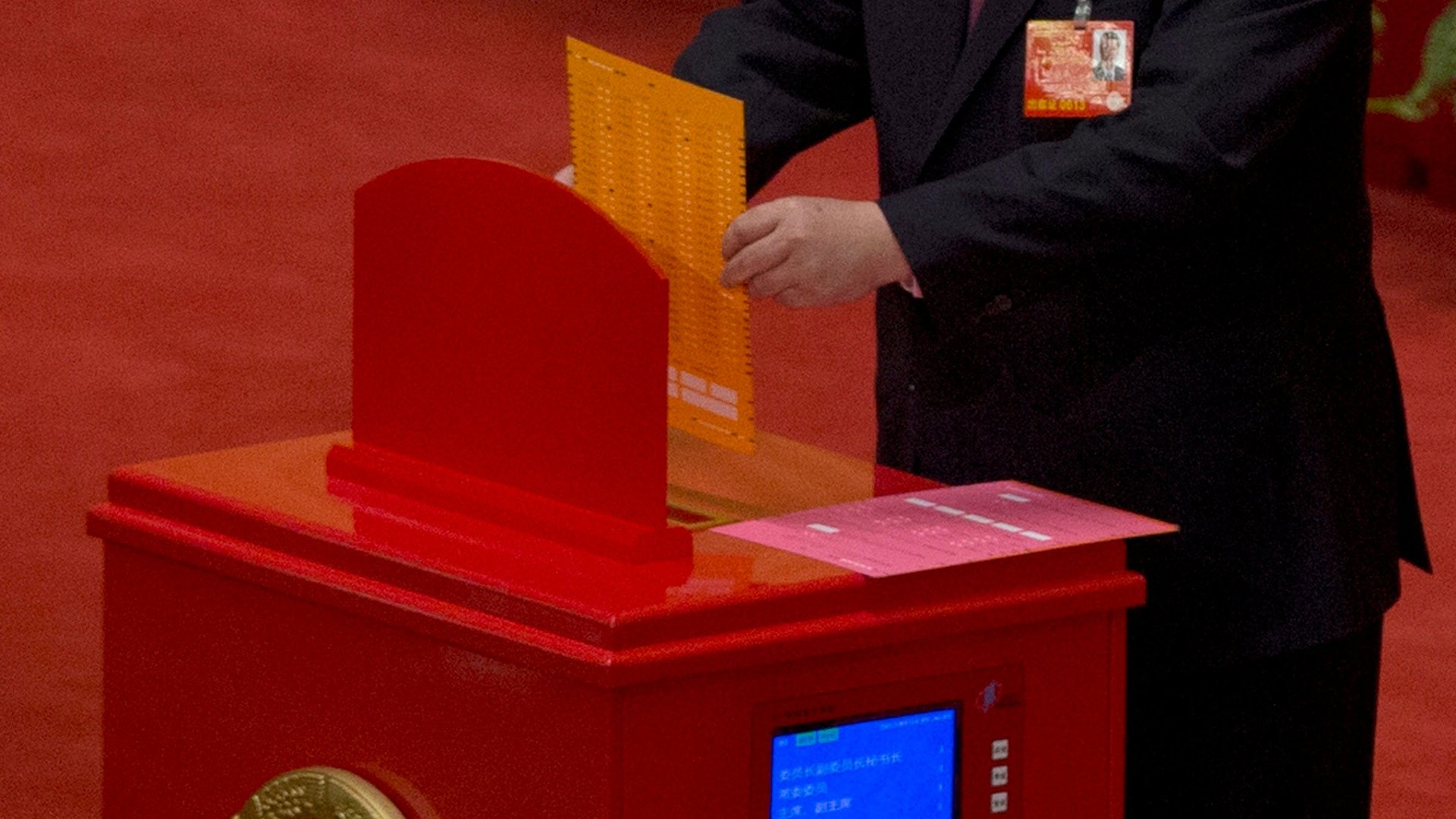Who was the mysterious holdout who voted against China’s new president?
Xi Jinping, as expected, became China’s new president today after a vote in the National People’s Congress. The tally: 2,952 in favor, 1 against.


Xi Jinping, as expected, became China’s new president today after a vote in the National People’s Congress. The tally: 2,952 in favor, 1 against.
So who was the lonely voter who refused to rubber-stamp China’s anointed leader? We will probably never know. The National People’s Congress has conducted all of its votes by secret ballot for decades.
But how secret is “secret”? In China, where politics are consensus-driven and the appearance of party unity is paramount, that dissident delegate would really want to be sure that his “no” vote couldn’t be traced back.
The state news agency Xinhua reported in 2007 that “some lawmakers suspect their voting might be recorded,” leading to an inspection of the system. The engineer who supervised the secret ballot system explained: “On the voting machine, green button stands for approval, red button for opposition and yellow button for abstaining. The computer system only adds up different color signals without saving or tracing the NPC deputies’ voting records.”
Voting machines have been used by the National People’s Congress since the 1990s. China’s lone holdout better hope they are more reliable than the American ones.